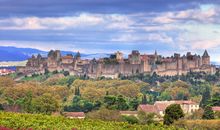Smithsonian Journeys Experts
Stephen Clancy
/https://tf-cmsv2-journeys-media.s3.amazonaws.com/journeys/expert/Clancy_Stephen.jpg)
Stephen Clancy is an art and architectural historian with special expertise in ancient, medieval, and Renaissance art and architecture. A popular Smithsonian Journeys Expert, he has led more than 20 tours and cruises through the Mediterranean region and northern Europe.
Stephen Clancy recently retired as Professor of Art History at Ithaca College in Ithaca, New York, where he taught for twenty-seven years. After receiving his Ph.D from Cornell University, Stephen taught the history of Ancient, Medieval, and Renaissance art and architecture, as well as courses on visual persuasion and the rhetoric of art. His research career began with a focus on fifteenth-century French and Flemish illuminated manuscripts, specifically with works connected to the artists Jean Fouquet (about whom he has written a book, a book chapter, and several articles) and Simon Marmion (for which he received a 1995-96 Fulbright Scholarship in Brussels, Belgium). In addition he gave conference presentations on the role of ivory carvings within the political and economic spheres of the Byzantine empire.
Stephen also received grants from the Hewlett and Keck foundations in support of a project that investigated how technology can open up new avenues for understanding the architecture of the distant past. This culminated in his work with a team of students and faculty from the University of Melbourne in Australia on an interactive web-based undertaking entitled “Virtual Chartres Cathedral.”
In an effort to create a more inclusive curriculum, Stephen traveled to a number of medieval Jewish cultural sites in Spain, Germany, and France, where the past is being revived and reinvented in interesting and sometimes controversial ways. Out of this research he developed a course entitled “Jewish Imagery and Images of Jews.”
More recently Stephen refocused his work on interactions during the Middle Ages between Muslims, Jews, and Christians in the Mediterranean basin. He was a Visiting Fellow at the Australia National University in Canberra, investigating the roles that images play in shaping cultural identity, in a project entitled “Visualizing the Self and Others: Muslims, Jews, and Christians in Medieval Iberia.”
The academic pursuit he has enjoyed above all others is teaching and sharing his knowledge of art and architecture. He has served as a lecturer on numerous tours over the past twenty-seven years in the Mediterranean from Turkey to Spain, and in northern Europe from Scandinavia to Russia.
What Our Travelers Say
- Deborah W., Portrait of PortugalHe was with us every step of the way, and totally approachable and knowledgeable.
- Martha T., A Danube River CruiseSteve was a great addition to the trip. His lectures were fantastic, he is a great person to talk to and he is just fun to have around.
- Linda K., Waterways of Holland and BelgiumStephen was delightful! Knowledgeable, friendly and fun.
Upcoming Tours
A Seine River Cruise: Paris to Normandy
9 days
|
Starting at: $4,690
May 7, 2024 - May 15, 2024
Tour Details ››
A Danube River Cruise
15-16 days
|
Starting at: $6,790
May 18, 2024 - Jun 1, 2024
Featuring Stays in Sofia and Prague
Tour Details ››
Southern Italy and Sicily
15 days
|
Starting at: $6,974
Sep 28, 2024 - Oct 12, 2024
Tour Details ››
Legendary Turkey and the Turquoise Coast
15 days
|
Starting at: $5,992
Oct 15, 2024 - Oct 29, 2024
Tour Details ››
Holiday Markets: A Rhine River Cruise
11 days
|
Starting at: $3,990
Dec 8, 2024 - Dec 18, 2024
Featuring a Stay in the Swiss Alps
Tour Details ››
Treasures of Southern Spain and Portugal
15 days
|
Starting at: $6,274
May 12, 2025 - May 26, 2025
Featuring Historic Paradores and Pousadas
Tour Details ››
Cruising the Rhine and Moselle Rivers
9 days
|
Starting at: $3,990
May 27, 2025 - Jun 4, 2025
From Amsterdam to Alsace
Tour Details ››
Inside Sicily
12 days
|
Starting at: $5,974
Sep 11, 2025 - Sep 22, 2025
An In-depth Exploration of History and Culture
Tour Details ››
Southern France and the Italian Riviera by Sea
8 days
|
Starting at: $6,360
Oct 2, 2025 - Oct 9, 2025
From Barcelona to Civitavecchia on the 184-guest Le Laperouse
Tour Details ››
Q. What intrigues you about being an art historian?
A. Delving into what works of art and architecture reveal about past societies is such a fascinating pursuit. Art is like an open window into almost every facet of human experience through it we see into the minds of artists and their audiences, and make sense of social, political, and economic systems long past. Art history bridges different cultures we may not understand something written in a foreign language, but when we look at a picture from that culture we viscerally “get” the message. And I am fascinated by the living history of buildings and things how and why they survive to the present day, and what this can reveal about our own understanding of the visual world that surrounds us. “Old stuff” is like a palimpsest of the past: mosques are turned into churches, castles are transformed into lavish palaces, and the entire process of change reveals so much about the ways human societies interact and evolve.
Q. What kinds of insights do you hope to convey to our travelers?
A. Art history has the reputation of being a kaleidoscopic and seemingly endless procession of “styles,” techniques, and dates. But works of art and architecture are the liveliest, most compelling, and often most revealing ways of gaining insight into a culture’s history, values, political struggles, and class structures – they are literally a living, immersive history “text.” Europe gave birth to political, cultural, and philosophical institutions that still shape our society today, and is also home to some of the world’s most innovative pathways into the future. This rich interplay between past and present makes Europe an exciting place to explore, and I always look forward to sharing this excitement.
Q. What sorts of topics do you cover in your presentations?
A. My presentations explore the broad arcs of art and architectural history that shaped Europe, while at the same time connecting works we see on our travels to these larger developments. The ways in which works manifest or fail to follow these broader trends of history can provide enormous insight into how and why a particular culture evolved, or how contact between cultures developed strikingly new forms of expression, as happened in Spain and Portugal. I also love to explore important topics that are sometimes overlooked—how and why castles developed, for example, or how medieval and Renaissance cities such as Bruges shaped modern urban life. And whenever possible I find compelling stories from the past that illustrate the human interests, ideals, and emotions that shaped the creation, use, and legacy of what we see on our itinerary.
Q. Tell us about your interest in how modern technology can bring new insight to the past.
A. Technology can never serve as a substitute for direct experience, whether it’s peering closely at a painting in a museum and seeing the way light shimmers off the brushstrokes or touching the walls of a medieval church and feeling the rough chill of naked stone.00 But what technology can do is help the imagination bridge the seemingly uncrossable gap between present and past by providing images, contexts, and suggestive visualizations that might otherwise be impossible to get. This ability to connect evidence in an interactive way can immerse viewers in the visual worlds of the past, and encourage them to “read” works as someone in the past might have done. These possibilities drew me to develop a digital project entitled “The Virtual Chartres Cathedral,” which sought to let students interact with images, texts, maps, and hypothetical reconstructions, in order to understand the cathedral through the lenses of varied 13th-century cultural attitudes.
Q. What do you enjoy most about accompanying Smithsonian Journeys travelers?
A. Smithsonian Journeys travelers embrace new experiences, and their liveliness and enthusiasm make them a pleasure to travel with. They are also exceptionally inquisitive, and I’ve learned a great deal by thinking through the different perspectives they bring to the things we see on our trips. And they are such seasoned travelers that I always look forward to getting some practical travel tips along the way!
While The Virtual Chartres Cathedral Project has been archived since the publication of this blog, you can still explore Chartres Cathedral virtually here.

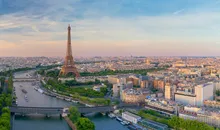
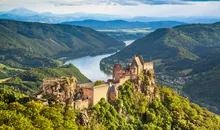
/https://tf-cmsv2-journeys-media.s3.amazonaws.com/filer/4b/c3/4bc34e95-8999-4cf3-8449-27088a11d58c/ita_positano_ist_947783706.gif)
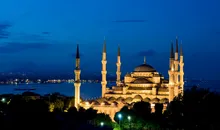
/https://tf-cmsv2-journeys-media.s3.amazonaws.com/filer/d1/97/d1976afb-7d79-41b4-a374-2080b8c8c80b/fra_strasbourg_citycenterentranceholidays_dt_l_50620667.jpg)
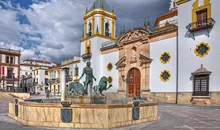
/https://tf-cmsv2-journeys-media.s3.amazonaws.com/filer/df/bc/dfbc015b-6642-41c0-87a1-afcffe3c1d16/fra_strasbourg_dt_xl_41962745_forweb.jpg)
/https://tf-cmsv2-journeys-media.s3.amazonaws.com/filer/2f/76/2f76de54-0b9b-4054-b146-cfb8432e2167/ita_sicily_taormina_greektheater_web.jpg)
